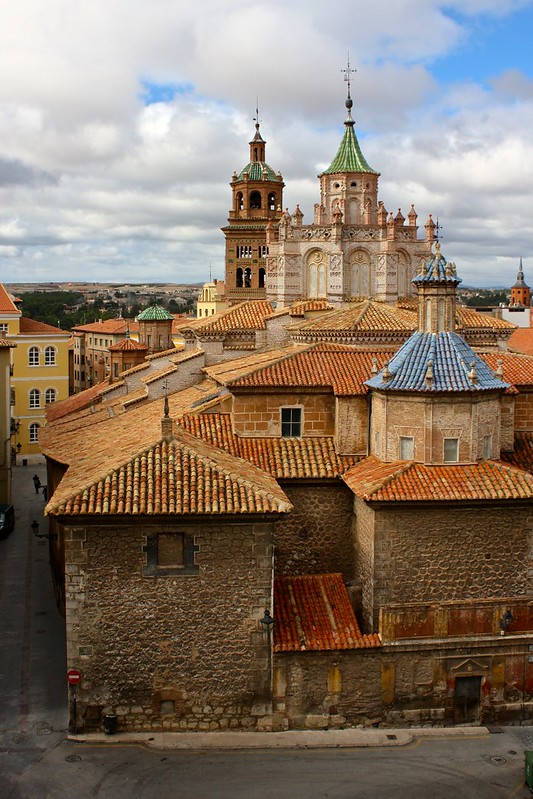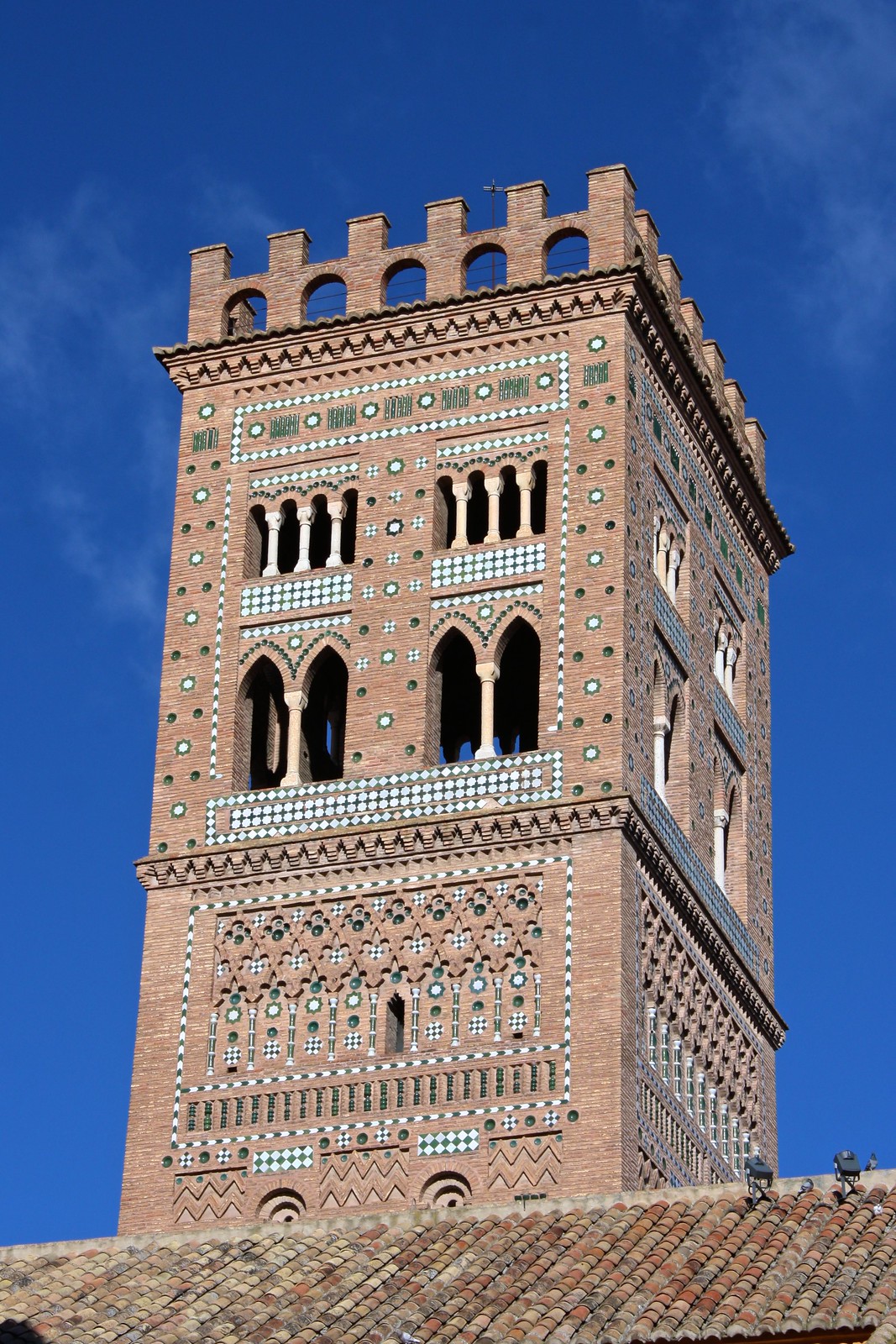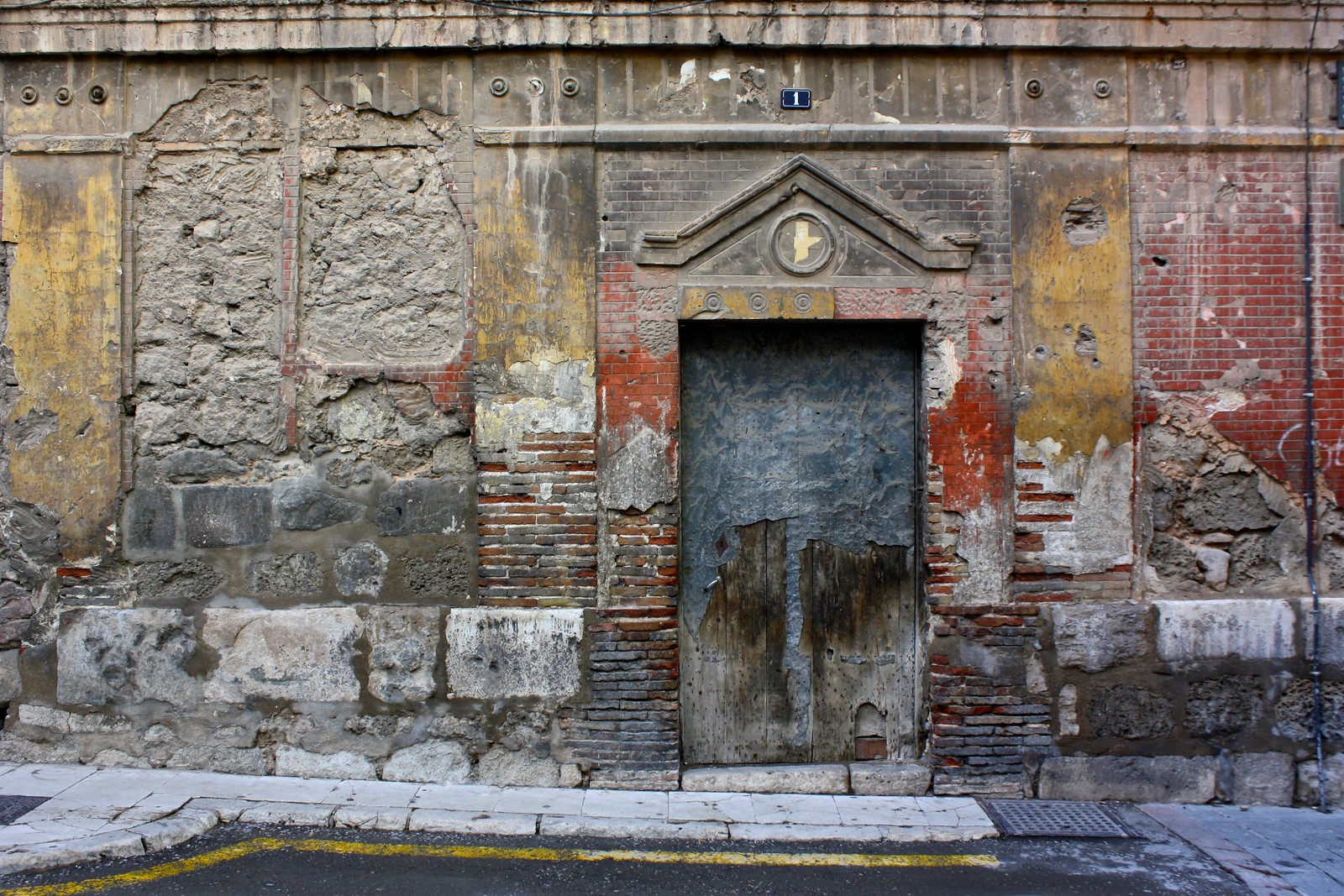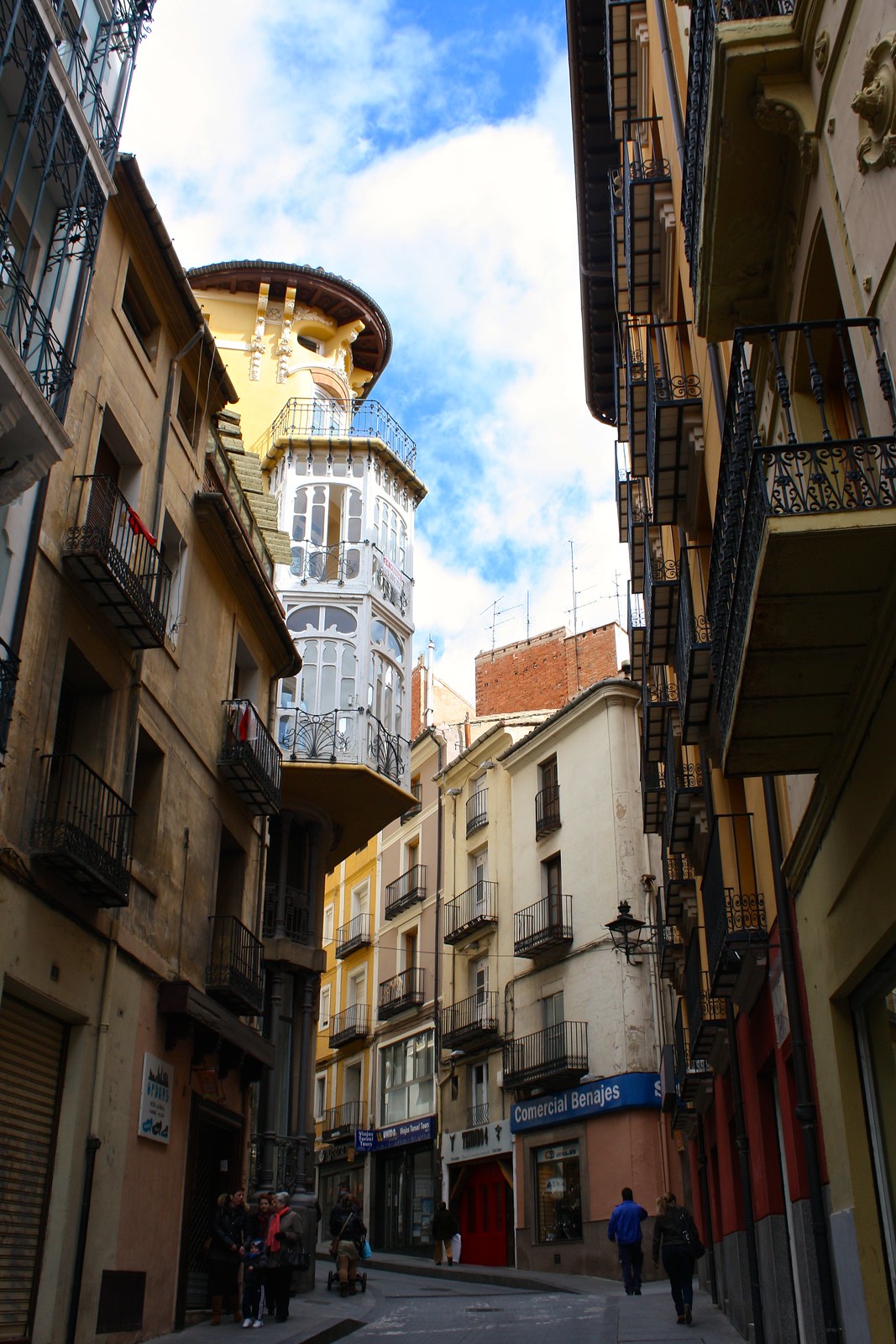Perhaps the highlight of my late winter trip around
Aragón, a landlocked region in east-central Spain, was the lonely, forgotten city of
Teruel. Although it’s the capital city of the province of the same name, Teruel is home to merely 35,000 people and is one of the remotest corners of the country; Teruel doesn’t even a direct train connection with Madrid! The area was so isolated up until recently that a group called
Teruel Existe (“Teruel Exists”) was formed to bring attention to the neglected province. Thanks to their efforts, a highway now connects
Zaragoza with
Valencia and passes through Teruel.
So how did I come to love this scarcely-heard-of outpost in middle-of-nowhere Spain? Well, for one, several of the city’s monuments form the core of the
Mudéjar Architecture of Aragón World Heritage Site.
Teruel has a priceless collection of unique medieval architecture lying in plain sight! My inner history and architecture nerds could barely contain themselves when I hopped off the train on a cold and windy (but sunny!) February afternoon.
After all,
the Mudéjar style is a pretty big deal. Pronounced “moo-DAY-khahr” [muˈðe.xaɾ], it’s the only architectural style unique to Spain. You won’t find Mudéjar buildings anywhere else in the world as this was a distinctly Spanish phenomenon. The name comes from the Arabic word
mudajjan, which means something like “tamed” or “domesticated,” but probably “subjected,” and it was originally applied to the Muslims who were allowed to stay in territories conquered by Christian kingdoms. In late-medieval Spain,
convivencia (“living-together-ness”) was the rule of the day, partly out of uneasy tolerance but also for pragmatic reasons: Muslims made up a large portion of the population and were integral to the economy, especially in the eastern half of Spain.
The Mudéjar style arose out of this diverse cultural setting in which
Christians, Jews, and Muslims lived side by side. Muslims shared the intricacies of Islamic art—which gave the world the wonders of the Great Mosque of
Córdoba or the Alhambra palace in
Granada—with Catholic newcomers, who had imported the prevailing Gothic style from continental Europe.
The result was a fascinating fusion of Christian forms (vaulted church, bell tower, cloister) with Islamic decorations: often a bell tower resembles a tall, rectangular Muslim minaret more than a round European belfry.
Moorish craftsmen shared their tradition of geometric designs or floral flourishes with their Christian conquerors and explained how to use low-cost materials like brick, plaster, wood, and ceramics to great effect. Flat surfaces were never left untouched. Instead, brick—the building material was always brick—was aligned in zig-zags, interlacing arches, and pyramids. Ceramic tiles filled out these exterior geometric designs, while inside, sharp, pointy stars emerged from wooden ceilings that were frequently painted with plant- or flower-derived forms.
You can find Mudéjar architecture all over Spain, but Teruel has a particularly high concentration of Mudéjar-style churches. Read on to learn about the unique churches that the city has to offer.
A treasure trove of Mudéjar churches
The oldest Mudéjar bell tower in Teruel belongs to the
Church of San Pedro, a stone’s throw from the Plaza del Torico in the city center. It was built in the 1200s, making it the oldest in town. The exuberant interior of this church was restored in the Gothic Revival style, but if you go outside, you can still appreciate the original Mudéjar design. In fact, you can even tromp around the church’s
ándito on a guided tour. This unique, fortified balcony circles the entire church, with stained glass windows on one side and the town to the other. The church is also home to the mummified Lovers of Teruel, but more on that in my next blog post.
The
Church of El Salvador’s bell tower straddles one of the main streets that leads into to Teruel’s historic core and also functions as a mini-museum of Mudéjar architecture. While climbing up the stairs to the upper floor where the bells hang, I got the feeling that I was back down south in Andalucía, huffing and puffing up
Sevilla’s minaret-turned-bell tower, the
Giralda. My hunch was correct, as the El Salvador bell tower was consciously modeled after Almohad-style minarets (of which the Giralda is the best example), with a three-floored structure circled on all four sides by stairs.
The bell tower
Church of San Martín stands vigil at the northern edge of the old town, a quiet neighborhood apart from the relentless rushing wind. It’s nearly identical to its counterpart in the Church of El Salvador, but because a spacious plaza and sleepy streets surround it on all four sides, it’s much easier to appreciate its beauty and contemplate this true gem of the Mudéjar style. Look for the bricks arranged in
sebka formation, with wiggly arches overlapping each other and stacking ever higher and higher. Admire the squat, eight-pointed stars floating on the façade, and notice the contrast between the earthy, red bricks with the bright white and green tiles interspersed throughout.
The Mudéjar monument that will blow you away is the
cathedral. First of all, its grand bell tower dates back to the year 1257, open at ground level to an arched passageway like other bell towers in town. Inside, the 14th-century Gothic church is crowned with a glorious, wooden ceiling, whose carved eight-pointed stars give way to infinite, geometric knots. Gold leaf and red paint illuminate the warm stained wood, and hundreds of narrow panels depict scenes from medieval life (like hunting a wild boar), various saints, or swirling designs from the natural world. Finally, the fantastical
cimborrio or dome that caps the center of the church is made up of two concentric octagons formed by the crossing of four pairs of parallel lines in true Moorish fashion. Soft light pours in from above, creating a peaceful, heavenly setting.
Gaudí-inspired Modernista homes
Mudéjar architecture isn’t all that Teruel is famous for. Although unaware of it before arriving, I soon learned that the city is a kind of exclave of
Modernista architecture imported from Catalunya to the east. This really surprised me, as I wasn’t expecting to encounter such exquisite houses in what has historically been a godforsaken town.
Most of the 17 personal homes and church-related buildings—all of which were built in the tiny old town—were designed by
Pau Monguió i Segura, a Catalan-born architect busy during the same years as
Antoni Gaudí during the Art Nouveau movement (early 20th century). Homes with names like
El Torico or
La Madrileña grace the central Plaza del Torico with their presence, and a handful of stately bourgeois residences spruce up otherwise drab alleyways.
Thin, intricate ironwork fences in typical Castilian balconies, and swooping curves whip back and forth from windows to doorways and arches. Designs inspired from the natural world—floral patterns or creeping vines—adorn the façades, giving the houses an elegant but playful mood. Teruel’s
modernista heritage was recognized in 2012, making the city a remote stop along the
Art Nouveau European Route.
Teruel doesn’t merely “exist,” it shows off! I can’t recommend this off-the-beaten-track city highly enough, and if you’re anywhere between Zaragoza, Valencia, and Madrid, I definitely recommend going out of your way to explore this wonderful place. There’s more to come later in the week about the town’s real-life Romeo and Juliet, so stay tuned!
Have you ever heard of Teruel before? Are you gaga for Mudéjar architecture or “meh”? Tell me your thoughts in the thread below!













